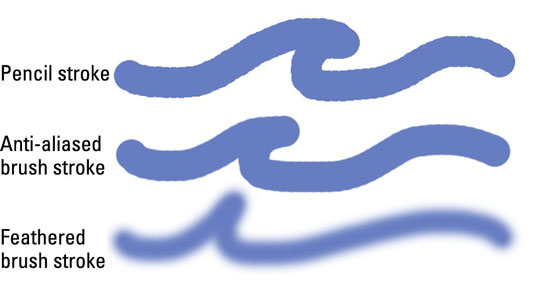Choose Paint Brush Color In Photoshop Elements For Mac
From Photoshop brushes to help you draw people (think: hair, skin and eyelashes) to brushes for drawing weather (cloud Photoshop brushes, snow, rain and lightening), landscapes (trees, grass, flowers) and water, you’ll find nearly every nature-inspired brush you can think of on this page. And the best part? These Photoshop brushes are all free. Elements gives you three ways to choose your foreground and background colors: the Color Picker; the color swatches; and the Eyedropper tool, which samples color in an image. Working with the Elements Color Picker. By default, Elements uses a black foreground color and a white background color.
Start Learning Now Our free lessons will get you started ( required). Get immediate access to our entire library. Membership Overview • Unlimited access to our entire library of courses.
• Search and jump to exactly what you want to learn. • *Ask questions and get answers from the community and our teachers! • Practice questions with step-by-step solutions. • Download lesson files for programming and software training practice. • Track your course viewing progress. • Download lecture slides for taking notes.
• Learn at your own pace. Anytime, anywhere! • Intro 0:00 • Lesson Overview 0:08 • The Paint Bucket Tool 0:46 • Color & Pattern • Opacity, Tolerance, & Blend Mode • Paint Bucket Demonstration 1: Filling a Layer • Paint Bucket Demonstration 2: Creating a Sepia Tone • Paint Bucket Demonstration 3: Changing Color Using Blend Mode, Opacity, 7 Tolerance • Paint Bucket Demonstration 4: Adding Pattern to an Image • The Gradient Tool • The Gradient Tool • The Gradient Editor 12:50 • The Gradient Editor Overview • Solid Gradient vs. Noise Gradient • Color Midpoint • Creating a Gradient • Gradient Map Feature 23:57 • Gradient Map Feature • Using Gradients for Layer Masks 28:21 • Using Gradients for Layer Masks. Software Training: Adobe Photoshop Elements 11 I.
Introduction 19:03 19:06 13:11 17:21 II. Workspace 14:59 25:43 22:12 12:43 29:05 15:37 18:57 17:07 III. Photo resizer mac for print. How to format an external hard drive for mac.
Camera RAW 10:00 21:00 IV. Elements Basics 23:59 10:57 18:29 11:56 18:17 11:27 18:21 23:06 31:19 27:54 22:26 V. Selections & Layers 24:47 23:28 26:20 18:33 16:28 20:04 20:57 25:26 VI. Retouching 27:18 31:42 12:49 24:47 VII. Photo Composites 22:42 VIII. Text 22:42 IX.

Filters & Effects 24:20 X. Cool Features 21:16 23:26 12:24 17:24 23:26 25:54 XI. Course Summary 9:40. Hi, everyone--Mike Brown back with you one more time, with another lesson in Adobe Photoshop Elements 11 from Educator.com! In this lesson, we're going to talk about two tools that we haven't discussed prior to this, and they are the Gradient tool and the Paint Bucket tool--somewhat similar--laying down colors for various reasons. Under the Drawing collection of tools, right below the Brushes tool, you will see the Paint Bucket tool, and to the right of that, the Gradient tool.
How To Change Paint Brush Color In Gimp
In previous versions of Adobe Photoshop Elements, they were grouped together under a single tool, and you would click, and they would fall, kind of like here with the Selection tools, together. But now, they are separate in Photoshop Elements 11. For the Bucket tool, we have these options down here; you can either work with colors (it's going to lay down colors and you have Blend modes for them), or it's going to lay down patterns (for which you have all sorts of choices of different kinds of patterns and textures). Color or patterns: now, you have an opacity choice selector here; you also have a tolerance slider, and again, your Blend modes; you can sample all layers, contiguous color, and anti-aliasing to keep the edges smooth. Let me show you the basic and obvious way you would work with a paintbrush, just blindly--the basic methodology. You have a foreground color--that is what it's going to work with; we have the Paint Bucket; we're going to do it in a normal mode, with an opacity of 100; and you simply click, and it fills. In this case, I have left it on pattern, so it filled with a pattern; if I clicked over here with the paint, it fills with a color.